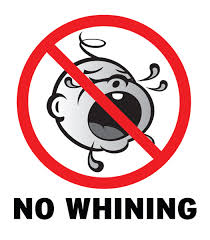According to Myrna Shure’s Raising a Thinking Child, there are 4 levels of asking a child for behavior you want.
LEVEL 1 Negative interactions: yelling, belittling, shaming, etc.
LEVEL 2 Saying what you want positively.
LEVEL 3 Giving information or talking about feelings. Click on “HOW TO GET YOUR CHILD TO LISTEN-INFORMATION/FEELINGS” at the end of the article
LEVEL 4 Asking thinking questions. Click on “HOW TO GET YOUR CHILD TO LISTEN: ASK QUESTIONS” at the end of the article
This article focuses on levels 1 and 2.
LEVEL 1 Negative interactions: yelling, belittling, shaming
Children internalize negative messages. What we say to children likely becomes their inner speech for the rest of their lives (Bailey, 2000).
Examples:
“Once again, you made a mess. Why can’t you do it like your brother? How many times do I have to tell you? Do you listen?”
LEVEL 2 Saying what you want positively
Instead of telling your child what not to do you, you tell them what you do want using more positive language and in ways they will understand.
Think of a time you were in a negative group of people- a work place, group of friends. How did it feel to spend a lot of time with them?
Will saying things positively always lead to cooperation? No. Remember this is one of many tools. (Please read other articles on the website to get more tools for the complex job of parenting.) Generally, though, saying what you do want is setting a positive tone. Kids hear 432 negative comments per day vs. 32 positive ones (Kvols, 1998) and there are studies showing that when a child is in a constantly negative or stressful environment that they don’t do as well academically or socially (Hatfield, 2010).
Suggestions for Saying Things Positively
- Don’t jump on couch.
Bottom stays on couch or feet on floor.
- Don’t yell.
Speak softly. (Model this for younger children because they probably don’t know what your standard for “softly’ is.) Or: You can go outside to yell.
- Don’t drink juice on couch.
We drink juice in the kitchen.

- Don’t splash me.
Water stays in the bathtub.
- Don’t eat that cookie.
We eat cookies after lunch.
- Don’t say “poo-poo”.
You can talk about that in the bathroom.
- Don’t spit.
Spit stays in our mouth.
- Don’t touch the painting
Han
- Don’t run.
Walking feet.
- Quit moving around.
Stand on this spot I’m pointing to here.
It is also important that when you explain to a child what to do that he understands what you mean. There is a story in Everyday Blessings by Jon Kabat-Zinn of a child who was told not to go around a corner at a busy marketplace. Every time the child did go around, the parent spanked him. Finally, the little boy said Daddy, what is a corner”?
REFERENCES
Bailey, B. (2000). Conscious discipline. Oviedo, FL: Loving Guidance.ds to your sides.
- Quit talking.
Listening ears.
Greensboro, Greensboro. Retrieved from //http://libres.uncg.edu/ir/uncg/f/
Retrieved from http://www.lepanoptique.com/sections/
Kvols, K. (1998). Redirecting children’s behavior. Seattle, WA: Parenting Press.
Shure, M., Digeronimo, T. F., & Aher, J. (2000). Raising a thinking child
workbook: Teaching young children how to resolve everyday conflicts and get
along with others . Champaigne, Illinois: Research Press.



